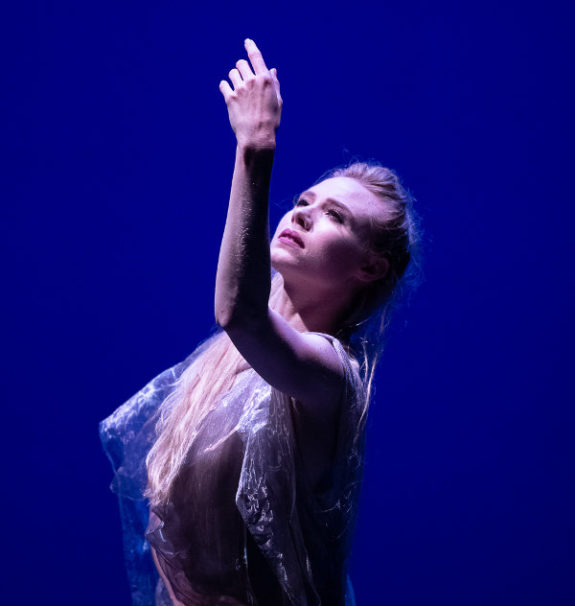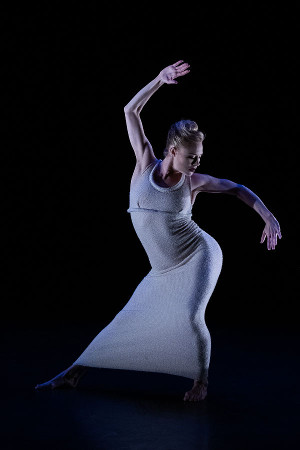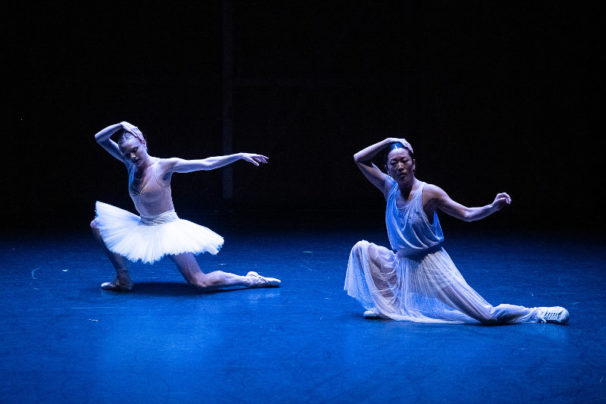
Being present for the career arc of a singularly distinctive and memorable dancer is a wonderful privilege. And it’s been a privilege to observe the initial 15 years of Sara Mearns’ career on our dance stages. Primarily, she is a leading light of New York City Ballet – bold, beautiful, sensual, authoritative, unpredictable, open and emotionally vibrant in the Balanchine repertoire and in special works created for her.
But over the past five years Mearns has become an explorer and a deeply committed collaborator, initiating projects with a wide – sometimes unexpected – range of choreographers. One senses a hunger and an openness to connecting with ideas and methods that intrigue her, but are foreign to her ballet-trained sensibility.
New Yorkers have been able to follow these projects, presented here and there, often for a fleetingly brief number of performances. Several happened at City Center’s Fall for Dance festival, where Mearns reprised the glorious suite of Isadora Duncan solos that Lori Belilove staged for her as part of the 2018 Paul Taylor American Modern Dance season.
At Jacob’s Pillow Dance Festival last week, Mearns brought five separate collaborations together in the Doris Duke Theater for a modest but eminently satisfying program titled Beyond Ballet. (Duncan was not on the bill, but Mearns joined Belilove’s company August 9, performing on the festival’s Inside Out stage.)

Jodi Melnick’s Opulence into part 2, a duet for Mearns and the choreographer, was the sole world premiere. Wearing matching midnight-blue cinched jumpsuits and sneakers, the two dancers came across as both businesslike and meditative. An opening with Melnick maneuvering a vast, noisy tarp (initially in darkness) didn’t bode well, but once she folded and got rid of it upstage, and Tei Blow’s sound design added its presence, a quietly hypnotic duet unfolded. Melnick, with her sharper, edgy energy, made tiny details noticeable, while Mearns blended juicy expansiveness with riveting precision.

It’s no surprise that Mearns confidently found her own way into Ekstasis, a lost 1933 Martha Graham solo “re-imagined” in 2017 for the Graham company’s repertory. The movement impulse emanates from a forceful pelvic impulse, but Mearns emphasized the slow, sculptural movements of the arms as well as the dynamic energy of the lower torso. It was akin to viewing a sensual sculpture from all possible sides and angles, in slow motion.
In an excerpt from Christopher Williams’ Daphnis & Chloé – a project still in development – Mearns was quietly expressive in a more dramatically tinged work, portraying the shepherdess with lush innocence. In a filmy draped costume by Reid Bartelme and Harriet Jung, her hair partly pulled back but loose down her back, she made every gentle leg flick, every pause and hesitation resonate with the naturalness of breathing.
Duets revealed the pleasure Mearns takes in her follow performers. There was playfulness as she shared the stage with fellow NYCB principal Ashley Bouder in Liz Gerring’s 2017 Duet. In ponytails and simple practice clothes, the two women explored space and dipped into luscious arabesques penchees, moving in and out of occasional unison with unadorned eloquence and bracing clarity.

Coming full circle, Mearns donned a tutu (albeit a practice version) and pointe shoes for the closing work, No. 1, her duet with Honji Wang (originally commissioned by Jacob’s Pillow in 2017) with choreography credited to Company Wang Ramirez. The opening brief film, projected on the Duke’s wooden backdrop and partly filmed on the scenic Inside Out stage, has greater resonance than the live portion. The women’s connection came across as sometimes supportive, sometimes wary as they maintain mutually respectful but distinctly separate existences.
Photo credit: Christopher Duggan for Jacob’s Pillow
Susan Reiter covers dance for TDF Stages and contributes regularly to the Los Angeles Times, Playbill, Dance Australia and other publications.
